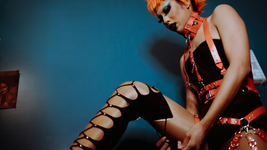Elizabeth Peyton’s 'Aire and Angels' - National Portrait Gallery
- Rachel Adler
- Oct 13, 2019
- 4 min read
Catching Colorful Moments of Life: A Review of Elizabeth Peyton’s “Aire and Angels”
FREE Entry
Prepare yourself to feel like a giant in a room with lofted ceilings—a feat that may seem impossible, but becomes reality through the exhibition of Elizabeth Peyton’s small portraits, Aire and Angels. Many of the advertisements for the Peyton show employ her portrait titled Practice (Yuzuru Hanyu), as a precursor to the exhibit. This piece also happens to be the first one on display when one goes to visit the show of five small rooms. It is shocking to see it in person - smaller than a magazine, the piece is swallowed by the overwhelming white wall behind it, with ceilings that seem to be 15 feet high. To assist in the shrinkage of the portrait, a large rope in front of the painting prohibits visitors from coming more than three feet close to examine the teeny tiny frame. That being said, the piece itself is a good demonstration of what to expect in her other pieces—focused, quick strokes of paint with unexpected color choices. One cannot anticipate what she paints, just like one cannot predict how the curator planned to display this show.

Practice (Yuzuru Hanyu) by Elizabeth Peyton, 2018, Green Family Collection © Elizabeth Peyton. Image courtesy of National Portrait Gallery
The first room is oddly stitched together, starting with the portrait of Yuzuru Hanyu—parallel to it stands the John Donne portrait by an unknown artist, which has a permanent home in this room. The two pieces do not compliment each other, but I imagine this long term piece cannot be moved. On the other side of opposing doorways reside three portraits—one on the right side, two to the left. The lonesome portrait is a self portrait, Live to Ride (E.P.), a painting which departs from some of the other pieces exhibited in the way that it is pensively detailed and completely filled in—lacking the swooping, confident strokes and playful empty space that some of her other pieces possess. Peyton’s self-portrait hides in the corner, not quite as obviously on display as the others. The two pieces opposite her are hung on adjacent corners and seem to have nothing to do with each other. One a portrait of Napoleon uncharacteristically drawn with charcoal as most of her pieces utilise oil paint, and the other titled Julian, contrasts the quiet Napoleon with its strikingly loud use of fiery colors—better exemplifying the majority of the show.

Napoleon by Elizabeth Peyton, 1991. Collection Sadie Coles. © Elizabeth Peyton. Image courtesy of National Portrait Gallery
Upon entering the next room on the right, the vast wall space encircling the portraits continues to compress the pieces despite Peyton's array of sizing and framing. Even the largest piece titled Love, looks smaller when standing at the doorway as the walls are in full effect. One could describe Peyton’s paint strokes as careless, but that would be a mistake. Love is poetically painted as the piece with the most negative space—a tactic Peyton continuously employs in conversation with brilliantly focused strokes that provide only the details that viewers really need. The lines applied in Love are the brashest in comparison to the rest of the show, in dialogue with Peyton’s white space, the two elements communicate the expansive and ambiguous nature of love.

David, March 2017 by Elizabeth Peyton 2017, Private Collection © Elizabeth Peyton. mage courtesy of National Portrait Gallery
The rest of the show depicts life's lovely bits—it may be taken from moments in Peyton’s own life or from pop culture, her friends’ portraits sit delightfully next to portraits from movies like Call Me By Your Name and other pop culture references. Unlike the disjointed front room, the other rooms develop with coherent themes and complimentary pieces. The only piece that comes remotely close to being out of place is a still-life painting of flowers in a vase, titled Flowers, Berlin, trying to find a place in a show of portraits. Almost as small as the Yuzuru Hanyu portrait, a moving moment exists in Peyton’s portrait Nick (La Luncheonette December 2002). The dark, brooding blues and melancholic purples of this piece invite you to spend time connecting the pieces of this woefully beautiful moment captured with oil paints. I implore visitors of this show to ponder this portrait for a moment longer than the other portraits.

Portrait at the Opera (Elizabeth) by Elizabeth Peyton, 2016. Courtesy The Brant Foundation, Greenwich CT, USA. © Elizabeth Peyton. Image courtesy of National Portrait Gallery
Peyton steadily invites empty white space to work in dialogue with her colorful, thoughtful details. Many of her portraits have hair that is roughly painted with singular, broad strokes of purples, blues, and dark browns, but the face is immaculately detailed. The large rooms and expansive wall space lends itself to the point of Peyton’s portraits: they are brief, alluring moments in the vastness of life—the short and brooding but wondrous periods of time that we look back on with nostalgia. The curation succeeds in sharing the sweet parts of life that these portraits are meant to encapsulate.
Edited by Charlee Kieser, Deputy Digital Editor

































